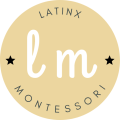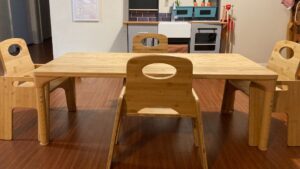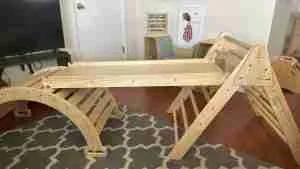
35+ Easy Montessori Sensorial Activities For 0 to 5 Years

*Disclosure: I only recommend products I would use myself and all opinions expressed here are our own. This post may contain affiliate links that at no additional cost to you, I may earn a small commission. Thank you for your support!
Share this post
What are Montessori sensorial activities?
Montessori sensorial activities promote brain development in children and help them explore the world around them in a hands-on, sensory-rich way.
They stimulate the senses (seeing, hearing, touching, tasting, and smelling) and allow children to form neural connections as they explore their environment.
Walking barefoot on the grass or sand, playing with rocks, jumping on puddles, or smelling plants and flowers during a hike are examples of sensory activities.
You can support your child’s development through simple Montessori sensorial activities by providing a rich sensory environment that encourages your child to explore.
The best part is that Montessori sensorial activities do not have to be complicated. I will give you a list of sensorial activities you can do in your home or outdoors.
Montessori sensorial activities by age
Newborns (0 to 3 months)
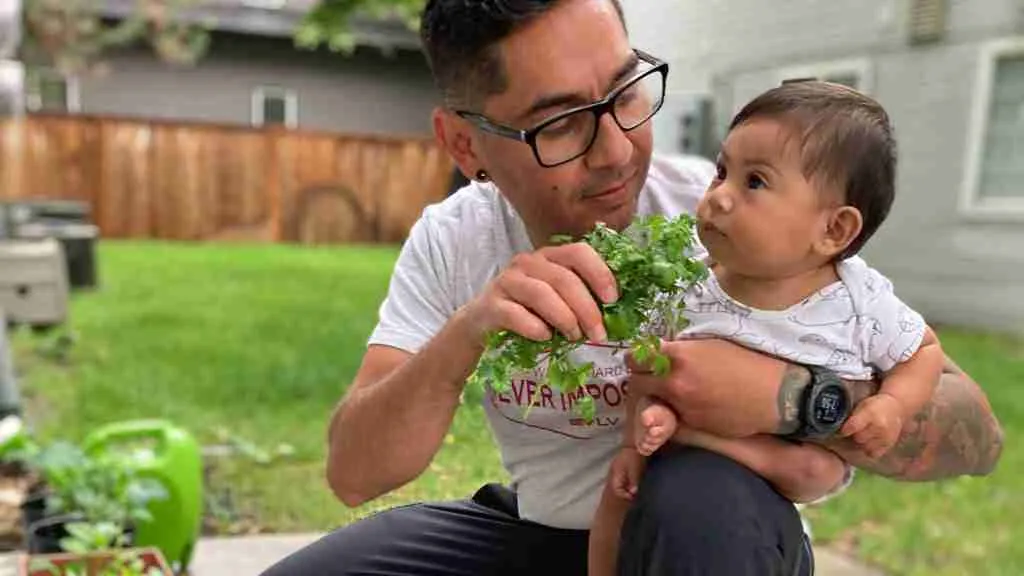
Here is a list of Montessori sensorial activities for newborns (0-3 months) that stimulate each of the senses.
Seeing:
1. Black and white cards: Place high-contrast black and white cards with images or geometric shapes near their floor bed or changing table to capture their visual attention.
2. Nature’s mobile: Create a lightweight mobile featuring natural elements like dried leaves or feathers and hang it on your play gym to introduce moving patterns for visual stimulation.
Hearing:
3. Gentle lullabies: Sing or play soothing lullabies for auditory comfort. Introduce gentle wind chimes or a soft rattle so your newborn can listen to different sounds.
4. Nature’s sounds: Spend time outdoors or open a window to let your baby listen to natural sounds like rustling leaves and chirping birds.
Touching:
5. Texture exploration: Provide a basket of natural materials such as a soft cotton cloth, a smooth wooden teething ring, and a piece of crinkle paper for your baby to touch and explore.
6. Tummy time on various textures: During supervised tummy time, lay your baby on different textured surfaces like a soft rug or a cotton blanket so they can feel different textures.
Smelling:
7. Lemons and oranges: Give your baby some lemons and oranges to smell. You can provide other fruits that have strong scents.
8. Herbal sachets: Introduce your newborn to subtle, natural scents by placing small sachets filled with dried lavender, chamomile, or other gentle herbs.
Tasting:
9. Fruits and vegetables: Allow your child to lick or taste various foods so they can get accustomed to different tastes.
Infants (3 to 12 months)
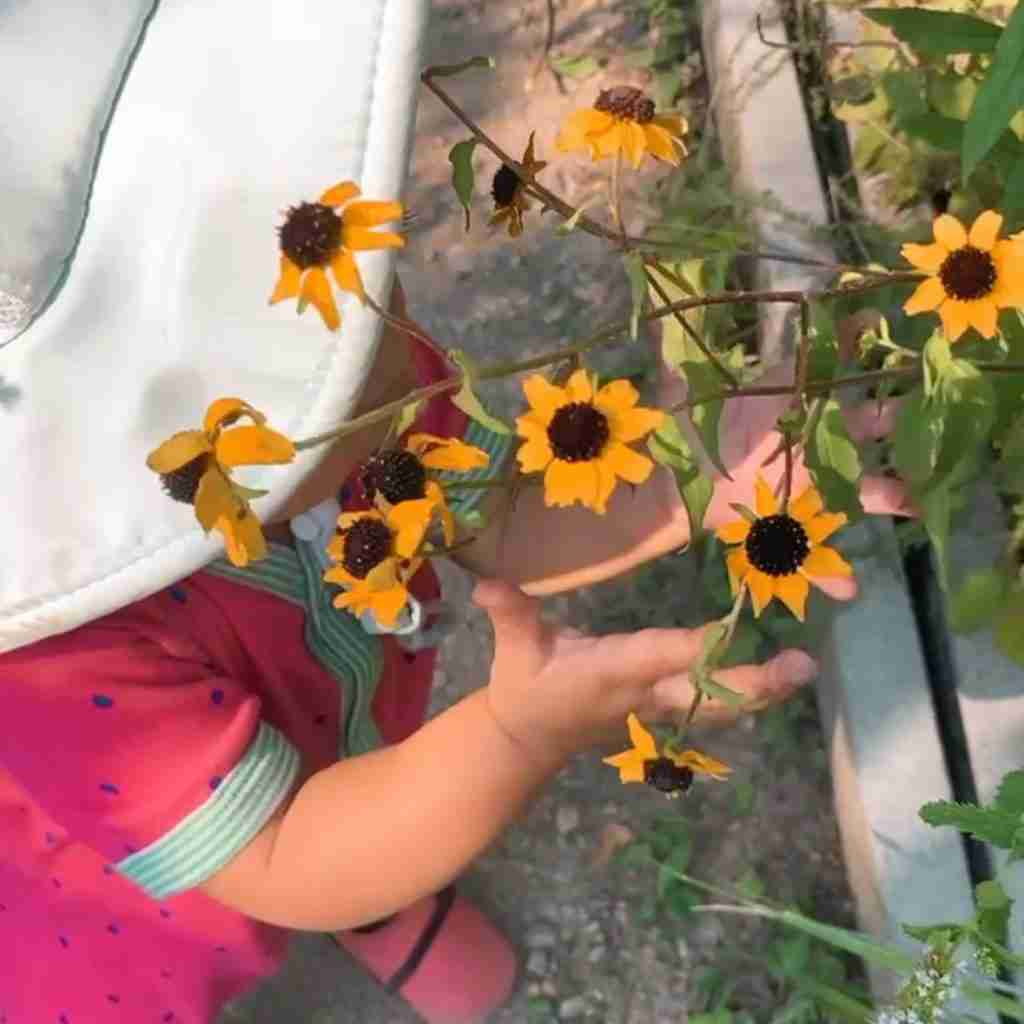
You can expand the Montessori sensorial activities to further engage their senses. Here are activities for each of the five senses.
Seeing:
10. Soft books of high-contrast images: Your infants’ vision is still developing, and high-contrast books are captivating. Encourage them to explore these images as you read together.
11. Mirror play: Place a baby-safe acrylic mirror near your infant during tummy time. This helps them develop their visual tracking skills and allows them to explore their reflection.
Hearing:
12. Soft music: Introduce soft sounds with various musical instruments to stimulate your infant’s auditory sense.
13. Rattle play: Offer various soft rattles designed for infants and encourage them to hold and shake them to explore the sounds and feel of the rattles.
Touching:
14. Sensory bags: Place various objects in zip-lock bags like cotton, dry noodles, or pebbles, and let your infant touch and explore these bags during supervised playtime.
15. Exploratory play with safe household objects: Provide baby-safe household items like wooden spoons, silicone spatulas, or soft brushes for your infant to handle.
Smelling:
16. Scented fabric squares: Place small, scented fabric squares (you can use essential oils) in a sealed plastic bag and allow your infant to feel and smell these squares under supervision.
17. Garden Sensory Walk: Visit a botanical garden and walk together and let your infant smell and touch the plants. Always ensure plants are non-toxic.
Tasting:
18. Mashed fruits and vegetables: Around 6 months, when your infant is ready for solid foods, introduce them to mashed fruits like ripe bananas or soft vegetables like steamed sweet potato.
Make sure that foods are age-appropriate and that you introduce them gradually.
19. Baby oatmeal or rice cereal: Baby cereals are specifically designed for infants. Offer small spoonfuls of these cereals, mixed with breastmilk or formula, to gently introduce different tastes.
Toddlers (1 to 3 years)

For toddlers, Montessori sensorial activities can be more interactive and engaging. Here are activities for each of the five senses.
Seeing:
20. Color matching with Montessori color tablets: Use Montessori color tablets, which come in graded shades, to teach your toddler about colors.
Go on a nature walk to find objects that match the color tablets.
21. Texture boards with sandpaper letters: Combine the texture boards with Montessori Sandpaper Letters.
Your child will explore different textures and improve their early literacy skills.
Hearing:
22. Sound jars: Fill small, sealable jars with various materials such as rice, dried beans, or sand.
Secure the lids and let your toddler shake the jars to explore different sounds. Encourage them to describe the sounds they hear.
23. Nature sound scavenger hunt: Go on a nature scavenger hunt in your backyard or a nearby park.
Listen for sounds like birdsong, rustling leaves, or running water. Discuss and identify these natural sounds with your toddler.
Touching:
24. Sensory bins: Create sensory bins using materials like rice, pasta, or dried beans. Hide small toys or objects within the bins for your toddler to discover through touch.
These bins provide a tactile exploration experience and are also a fun game your child can play with friends.
25. Nature walk with a sensory bag: This is one of our favorite activities. During a nature walk, give your toddler a small, transparent bag.
Let them collect natural objects like smooth stones, pinecones, or leaves, and discuss the textures and shapes as they go.
Smelling:
26. Herbal playdough: Make homemade playdough using scents like lavender, cinnamon, or citrus zest.
Your toddler can knead, mold, and enjoy the pleasant aromas while they develop their fine motor skills.
27. Guess the smell: Place some cotton balls in paper cups, add some liquids like orange juice, vinegar, lemon juice, and oils, and let your toddler guess the scent.
Tasting:
28. Fruit and veggie tasting: Offer a variety of fruits and vegetables for a tasting session and encourage your toddler to explore different flavors and textures.
Discuss the colors and shapes as they sample these healthy snacks.
Preschoolers (3 to 5 years)
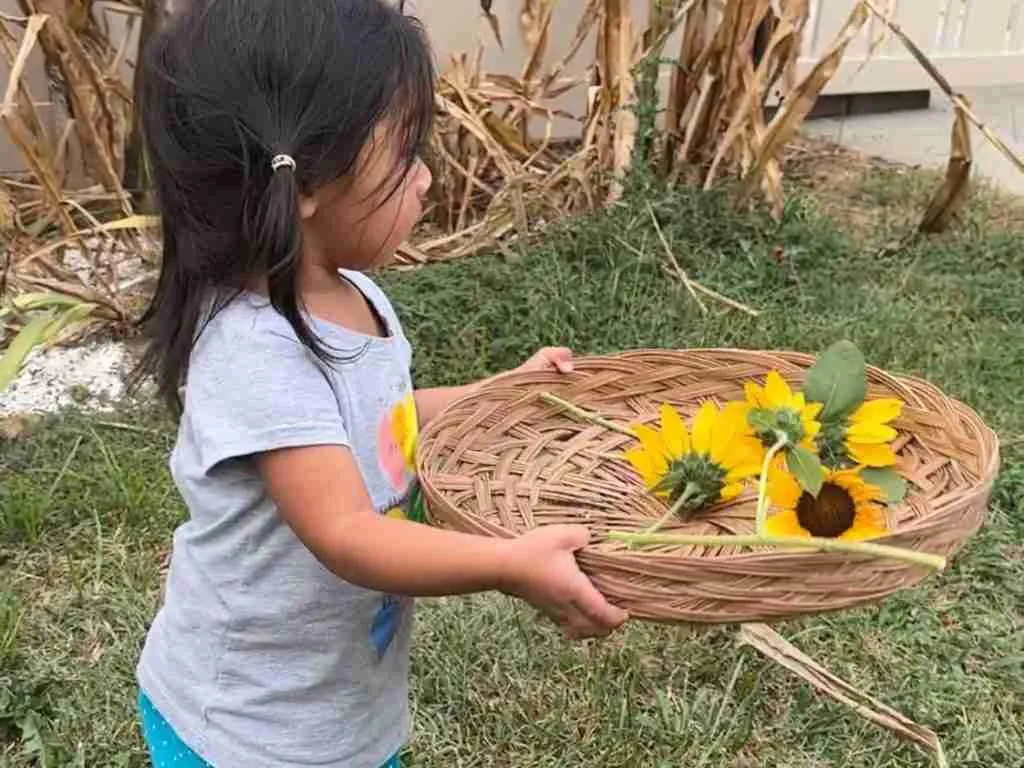
At this age, you can introduce Montessori materials to further enhance your child’s senses:
Seeing:
29. Montessori Color Box 3: Introduce the Montessori Color Box 3, which contains 63 shades of color.
Engage your preschooler in sorting natural items from your nature walk according to these specific colors to reinforce their color recognition skills.
30. Montessori geometric solids: Montessori geometric solids help your child understand three-dimensional shapes and geometry comprehension.
Hearing:
31. Sound discrimination with sound cylinders: Montessori Sound Cylinders contain pairs of objects that make similar but distinct sounds.
Your child can match the cylinders by sound to refine their sense of hearing.
32. Sounds with bells: Create a sound scavenger hunt using bells and chimes placed around the outdoor space.
Your preschooler can locate and identify the sources of different sounds.
Touching:
33. Montessori touch boards: Incorporate Montessori Touch Boards, which offer graded textures for tactile exploration.
Your child can compare these textures with those found in nature during outdoor adventures.
34. Montessori Knitting Forks: Combine nature exploration with Montessori Knitting Forks to weave items like grasses, leaves, or twigs.
This provides a hands-on tactile experience while fostering fine motor skills.
Smelling:
35. Aromatic herb garden: Plant a mini herb garden with aromatic herbs like basil, thyme, and mint, and let your child touch and smell the herbs while discussing their scents and uses.
36. Smelling bottles: This is a fun activity you can do with your family. The smelling bottles come with 2 sets of 6 bottles used to refine your child’s sense of smell and pairing.
Tasting:
37. Cooking: This is a practical life activity that provides numerous benefits. Let your child help in the kitchen and create dishes from different parts of the world.
38. Sensory exploration with spices: Give your child small containers with a variety of spices so they can explore and discuss the unique tastes of spices like cinnamon, cumin, or cardamom.
How Montessori sensorial activities stimulate your child’s senses
Remember that the goal of these Montessori sensorial activities is to stimulate each of the five senses.
Your child will explore and interact with their environment so they get a deeper connection with the world around them.
If you want to create your own sensorial activities, take the following is accomplished for each of the senses:
- Seeing: Activities should promote visual discrimination and color recognition, and help your child recognize various shapes and sizes.
- Hearing: Activities should help your child refine their listening skills and sound discrimination.
- Touching: These Montessori activities should provide opportunities to explore different textures, temperatures, and surfaces.
- Tasting: Your child should refine their sense of taste by exploring various foods.
- Smelling: Your child should learn that different objects like foods or natural materials have unique smells.
What to do next?
Sensory play enhances your child’s cognitive development through hands-on exploration of different textures, materials, and sensory inputs and is crucial for brain development.
For more activities that support your child’s growth, read my articles about independent play and play schemas.
Now go ahead and try these activities, you and your child will have fun doing them!

Hello, I am Leslie. I am on a mission to help you support the growth and development of your child. With the right tools and proper guidance, you can navigate parenthood with confidence and assertion! My goal is to equip you with knowledge to help you construct a strong foundation for your child’s life.
Suggested articles
You May Also Like

13 Best Postpartum Products To Help With Recovery
These are 13 of the best postpartum products to help ease your recovery.

What is a Topponcino? 7 reasons why you’ll love it
A Topponcino is a thin and soft Montessori baby support pillow that allows you to comfortably and safely hold and carry your newborn.

Practical Guide To The Montessori Method At Home
In this practical guide to the Montessori method at home, I will share five strategies on how to apply the Montessori method at home. I will also give you five common mistakes you should avoid so you can help your child thrive.
